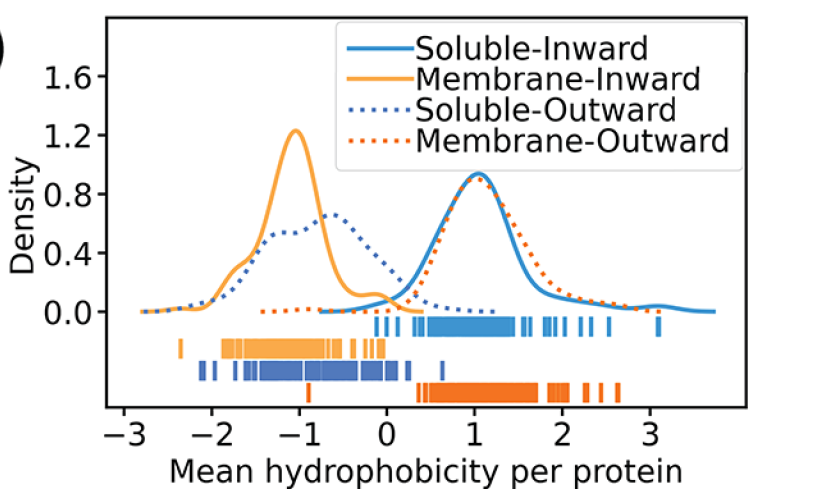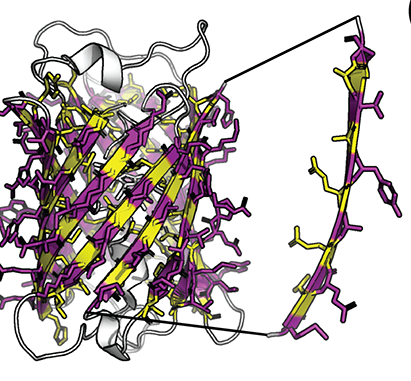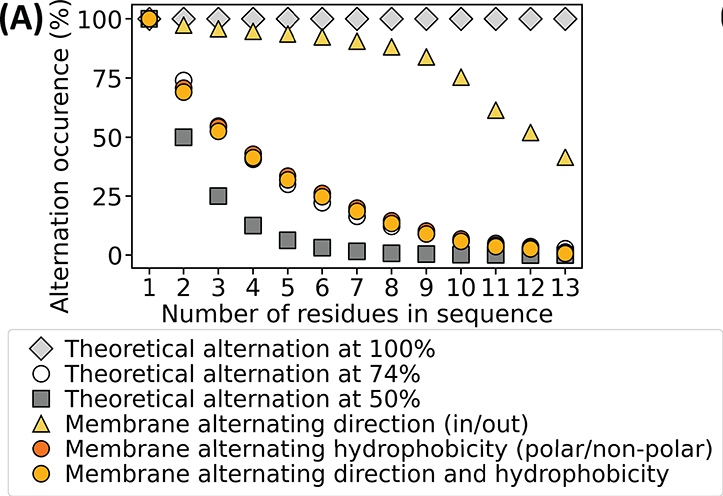https://pubs.acs.org/doi/10.1021/acs.jpcb.1c00878
The title says it all, but let me elaborate just a bit. This paper came about because we often talk in lab about how outer membrane beta barrels are inside out soluble barrels– it’s a concept that’s intuitive but not obvious how to demonstrate. In contrast to membrane beta-barrels, membrane helices have long been known to NOT be inside out soluble proteins. Membrane helices have a hydrophobic core similar to soluble proteins, and a more hydrophobic exterior where they interact with the membrane. But membrane barrels have a hydrophilic core! Some of their cores are hydrophilic because the barrel is wide enough to be water solvated, and some of the barrels are small but have charged amino acids on the interior anyway. Rik Dhar compared the hydrophobicities of structurally characterized membrane barrels to similarly structured soluble barrels. He found that the hydrophobicity of the exterior of one perfectly matched the hydrophobicity of the interior of the other and visa versa

Another feature of barrels that is commonly mentioned but had never been proven is that the hydrophobicity of the amino acids alternate: polar, non-polar, non-polar, polar etc. I *think* the first mention of this is a 2002 review by Schulz, but there it’s mostly speculation.
The idea of alternation makes sense because the side chains in a beta strand alternate direction almost perfectly

But Ryan Feehan found that though the directional alternation is really high, the hydrophobicity alternation only occurs at ~74% efficiency.

Finally, this manuscript really took shape when Rik Dhar decided to use Covid time to learn to code! I think it’s amazing that he learned to code and published a paper using his new skills in less than a year. Way to go!